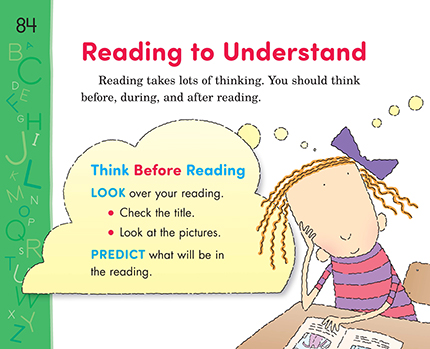Page 84 from

Start-Up Activity
Select a storybook to read aloud. Before reading, model the "Before" strategies on page 84. Use the strategies shown on page 85 "During" and "After" reading. Then have students then use these strategies to independently read a storybook. (Some students may need to work with a partner.)
Enrichment Activity: Apply this strategy whenever you read a story in class. Encourage students to use the strategy for all of their independent reading.
Think About It
“Reading a fun book is like opening a special present.”

Start-Up Activity
Select a storybook to read aloud. Before reading, model the "Before" strategies on page 84. Use the strategies shown on page 85 "During" and "After" reading. Then have students then use these strategies to independently read a storybook. (Some students may need to work with a partner.)
Enrichment Activity: Apply this strategy whenever you read a story in class. Encourage students to use the strategy for all of their independent reading.
Think About It
“Reading a fun book is like opening a special present.”